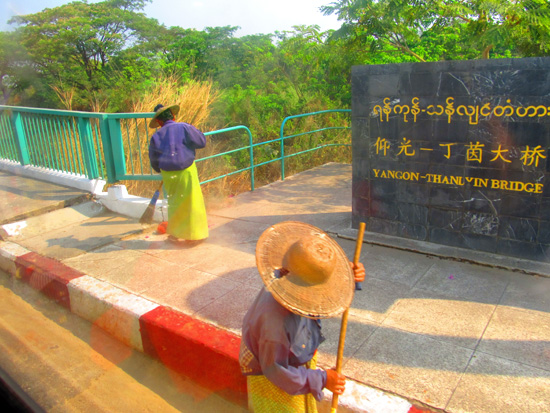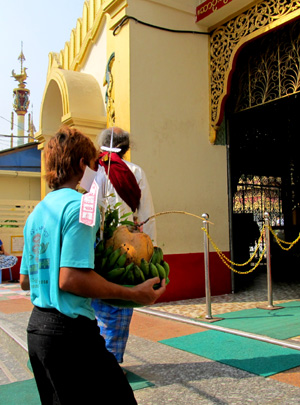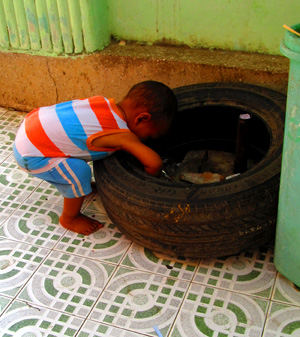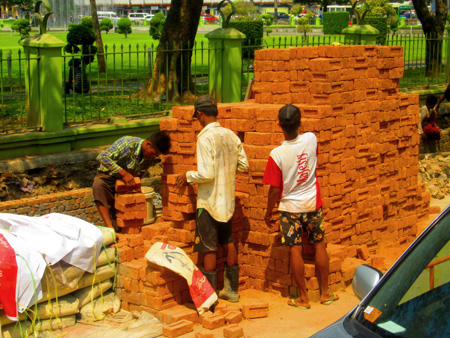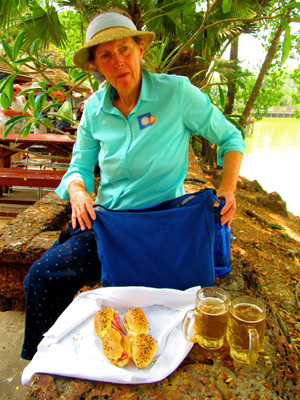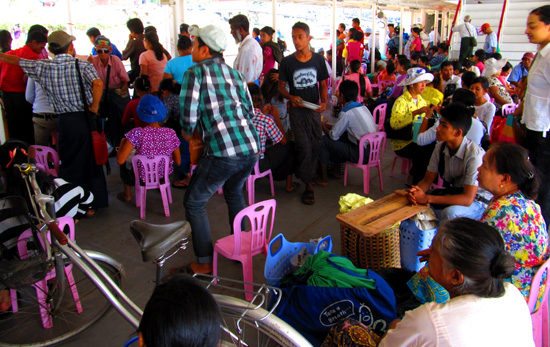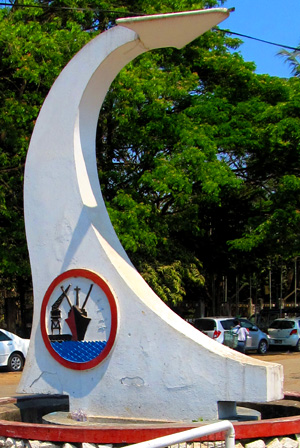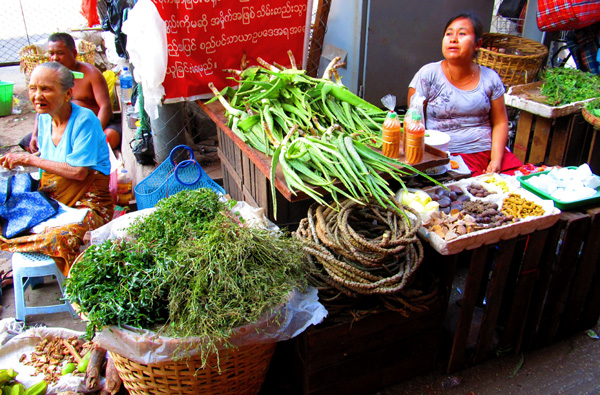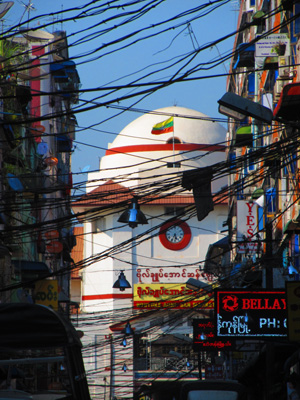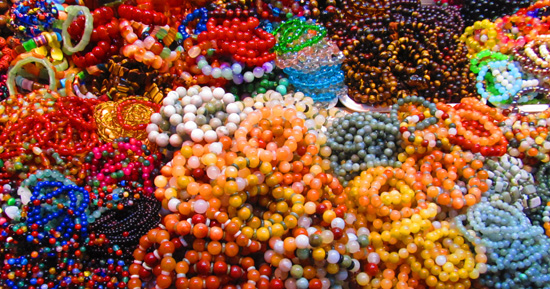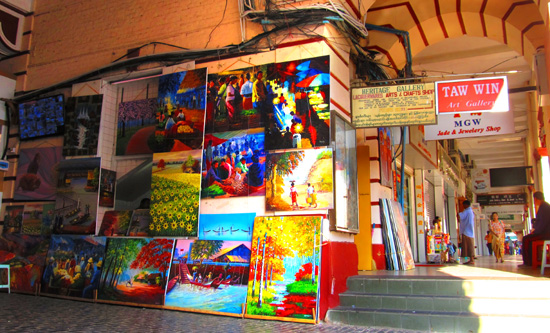|

Then our next temple was Chauk Htat Gyi reclining Buddha, 223
feet long...


We were surprised to see how androgenous this Buddha was.


The bottoms of the feet were covered with interesting symbols.



We obtained some Myanmar cash in case we needed it for some
reason.


From the bus... We would see Shwedagon Pagoda's golden temple
dog up close later. We would visit this site late in the afternoon
so we'd experience the setting sun on all the domes.
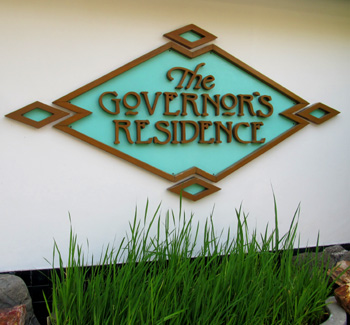

We failed to see the reason to stop at this high-end resort
hotel except that the guide probably earns a fee for bringing
people to its gift store.

I did like the bat flower, which was blooming from several pots.

After a visit to a museum where no cameras were allowed, we
finally stopped at the iconic Shwedagon Pagoda, the most important
pagoda in the country.

Four pedestrian bridges lead to the temple grounds. Everyone
was barefoot. Those hard marble floors were tough on our geezer
feet.

A holy tree was a fig.


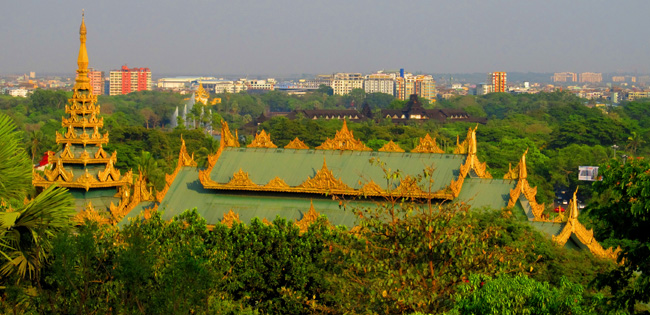
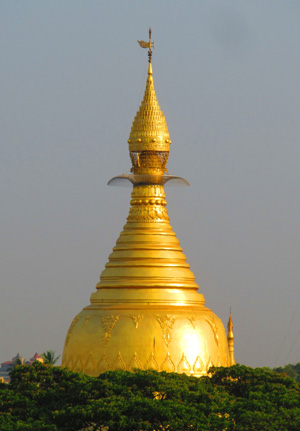


Situ tooks us to the Tuesday shrine for those who were born
on Tuesday, which was the day he was born and this is also reflected
as part of his name.








Some of the marble flooring looked like carpet, but there was
no relief from the hard floors. The ravens were amusing to us.


Two Buddhist nuns. All boys are required to be monks at some
time in their lives, but it is optional for girls.

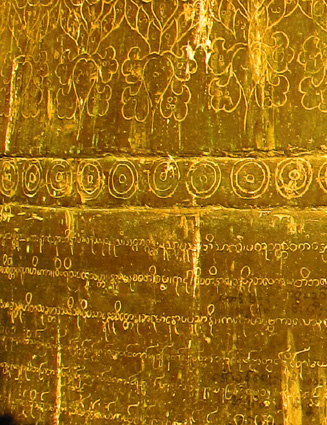






Some people sat under this bell. Whole families pray together...


In the midst of the worship, some surprisingly universal and
modern photographic moments.


 
The young women clad in gray are in various stages of their
praying.




Finally, it's sunset and we headed back to the bus. On the way
a puddle offers a golden reflection.

The temple dog looks out over the city. Then back to the ship...

The next morning we are out again with Charlotte's group. The
bus was late, so our schedule of events was changed.


The view from the bridge...

A trishaw with two passengers.

The bus dropped us off near a small market.

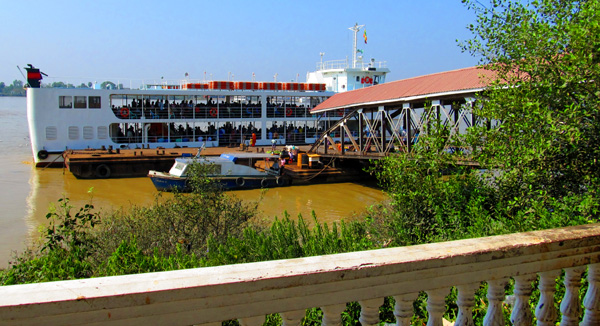
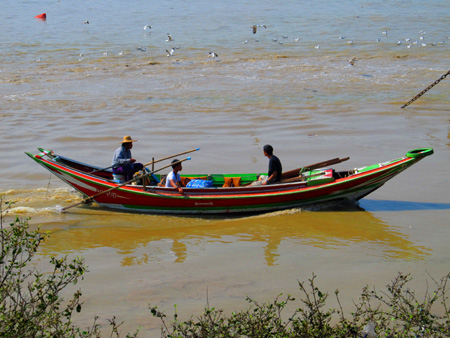
We walked to a ferry terminal.

Masses of humanity ride the ferries across the river.


We joined in. Vendors worked the crowds on the ferries and from
the docks.




At the opposite shore, a boat gets a bottom treatment.

Compact family transport.


A watermenlon lady strides to make the next ferry where she'll
try to sell her fruit.


On the far side of the river we are assigned a trishaw for a
tour: one passenger per vehicle.
 
From the trishaw, a man selling a petroleum product and another
with ice blocks covered with sawdust.


Some of the trishaw pedalers had their work cut out for them
with large ship passengers.




Sitting sideways did offer some relief for the hips. The sitting
space was too small for us. I had many bruises from this ride,
but it was great fun.


We passed through villages where people eke out a living by
selling stuff from their houses.


We stopped at an orphanage.
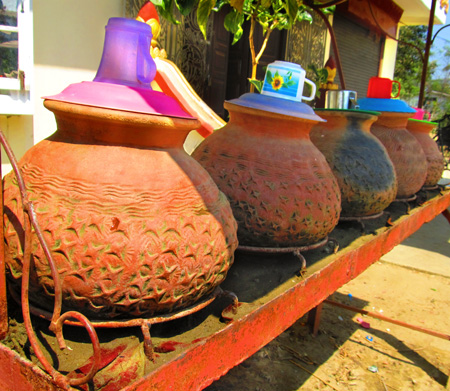

The terracotta pots keep water cool.
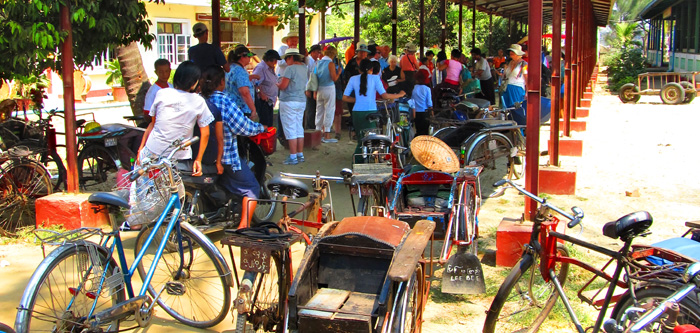
Our group caused a traffic jam.


The drivers cool off and chew betel leaves and nuts while we
look around. One driver demonstrates what happens when you chew
too many of those red narcotic nuts.
 
I received a facial treatment, which we'd seen on many women
and girls. This mud did make my skin feel smoother when I finally
washed it off at the end of the day. But while I wore it, the
locals nodded to me or gave me a thumbs up. It turned out to
be a social experiement, too.

Not far from the orphanage we stopped at the Buddhist temple
that runs it. We did not go inside where the old monk was working
the crowd for donations.
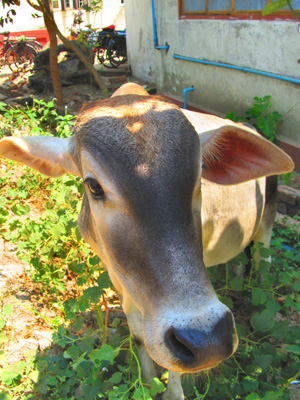

We talked to a holy cow (really a brama calf) instead. Then
it was on the road again.

Some roads were smoother and busier with other traffic.

We went through an area where building supplies were sold.

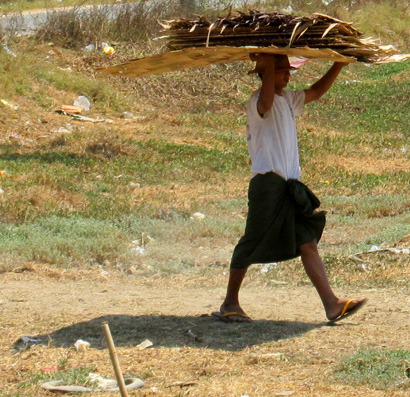
People were inventive in transporting these materials to their
building sites.



The group stopped for coffee and a snack.


Instead of eating, we mosied around the neighborhood and mingled
with the goats.


This goat retreived a banana peel from one of the trishaws.
A caravan of Chinese trishaw passengers passed by and then we
were on our way again.
| 












